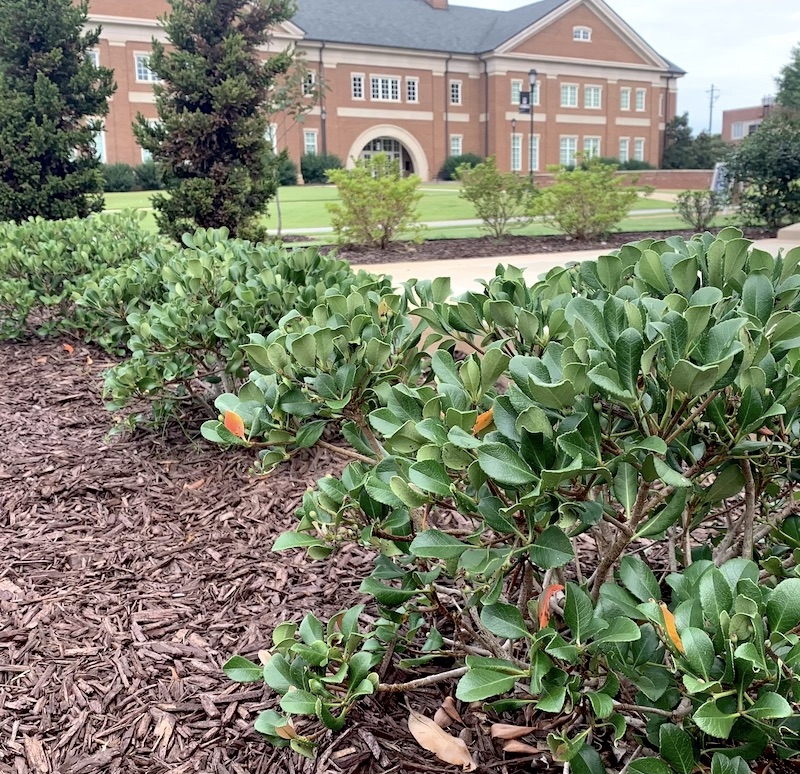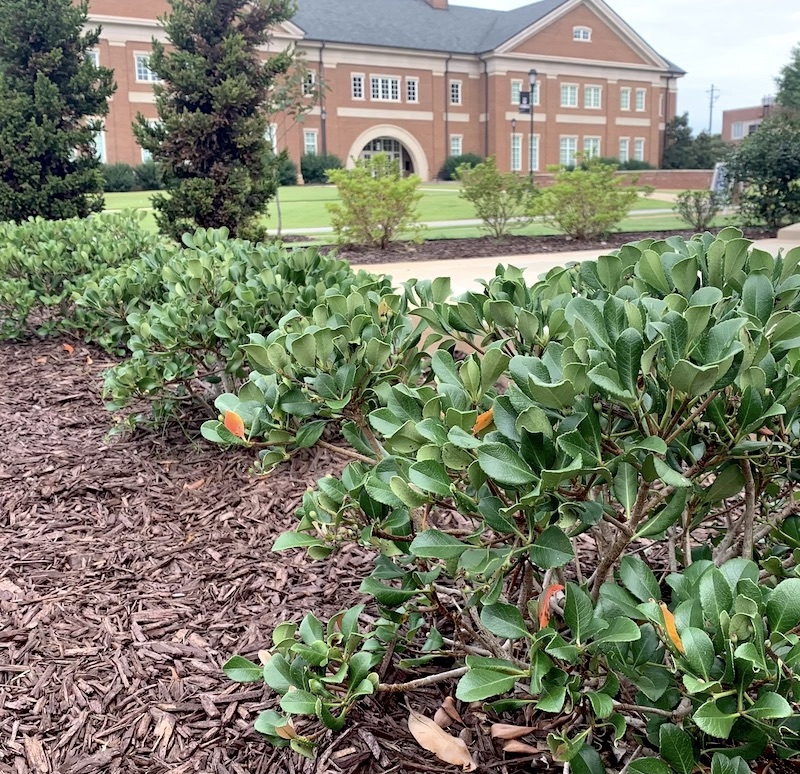Bartow County, where I am based, had its first deep freeze of the season in November. This has been a very unusual fall, with temperatures peaking at 100 degrees Fahrenheit the first week of October before plunging to 20 F by mid-November. Many areas along the East Coast broke record low temperatures from the arctic blast that blew through the region.
If you’ve walked around your landscape recently, you should have noticed that most deciduous shrubs are going dormant and tender perennials have turned to mush. This means it’s time to winterize your landscape.
Now is the time to add a blanket of mulch to your perennial flowers and shrubs. Maintaining a mulch layer at least 3 inches deep will significantly reduce weeds. Any type of mulch is better than no mulch at all. The main differences between mulches — such as pine straw, wood chips or shredded leaves — are cost, aesthetic appeal and how long they last.
I don’t recommend using shredded rubber mulches. Although they last a long time, they do not break down or add any organic matter back to the soil. Also, rubber mulches eventually get covered in leaves and other debris that are difficult to keep clean. About the only time rubber mulches are appropriate is in a playground or permanent pathway.
Mulching is one of the most important cultivation practices to help newly planted trees and shrubs get established and keep them healthy. Even though trees may appear dormant in the winter, their roots are still actively growing and require consistent moisture to survive.
The mulch layer should extend at least as far as the canopy width of trees and shrubs. Expand this mulch area over time as the trees or shrubs grow.
Daylilies, hostas, cannas, dahlias, lantana plants and other dormant perennials are ready to be cut back and cleaned up for their winter slumber. Cover them with a few inches of mulch or pine straw to protect the roots from extreme winter temperatures.
Now is also a great time to divide overcrowded perennial flowers or move them to a new location.
Fall and early winter are the best times to plant new trees and shrubs. You can also add edible plants such as blackberries, blueberries, grapes, strawberries and fruiting trees. Scavenge local nurseries and garden centers for discounted dormant plants. It’s hard to buy a plant when it’s dormant, but smart gardeners know that these plants are actually in the perfect stage to plant.
Inspect the roots of perennial plants by slipping them out of their container at the nursery center and checking for white, healthy roots throughout the soil profile. Although the top of the plant may be dormant, the roots should still be alive and healthy. If you find black or rotted roots, the plant may have been overwatered or is diseased. Only buy plants that appear to have healthy roots.
You can still plant winter-hardy annual flowers such as pansies, snapdragons, Swiss chard, kale and dusty miller. They will add a splash of color to your winter landscape in areas where your summer annuals have died out.
Plant cold-hardy bulbs such as tulips, crocus, irises, and daffodils in the fall. Fall planting will help spring-flowering bulbs develop good root systems and ensure that they flower on schedule.
For more information, see University of Georgia Cooperative Extension Bulletin 1065, “Care of Ornamental Plants in the Landscape.”




